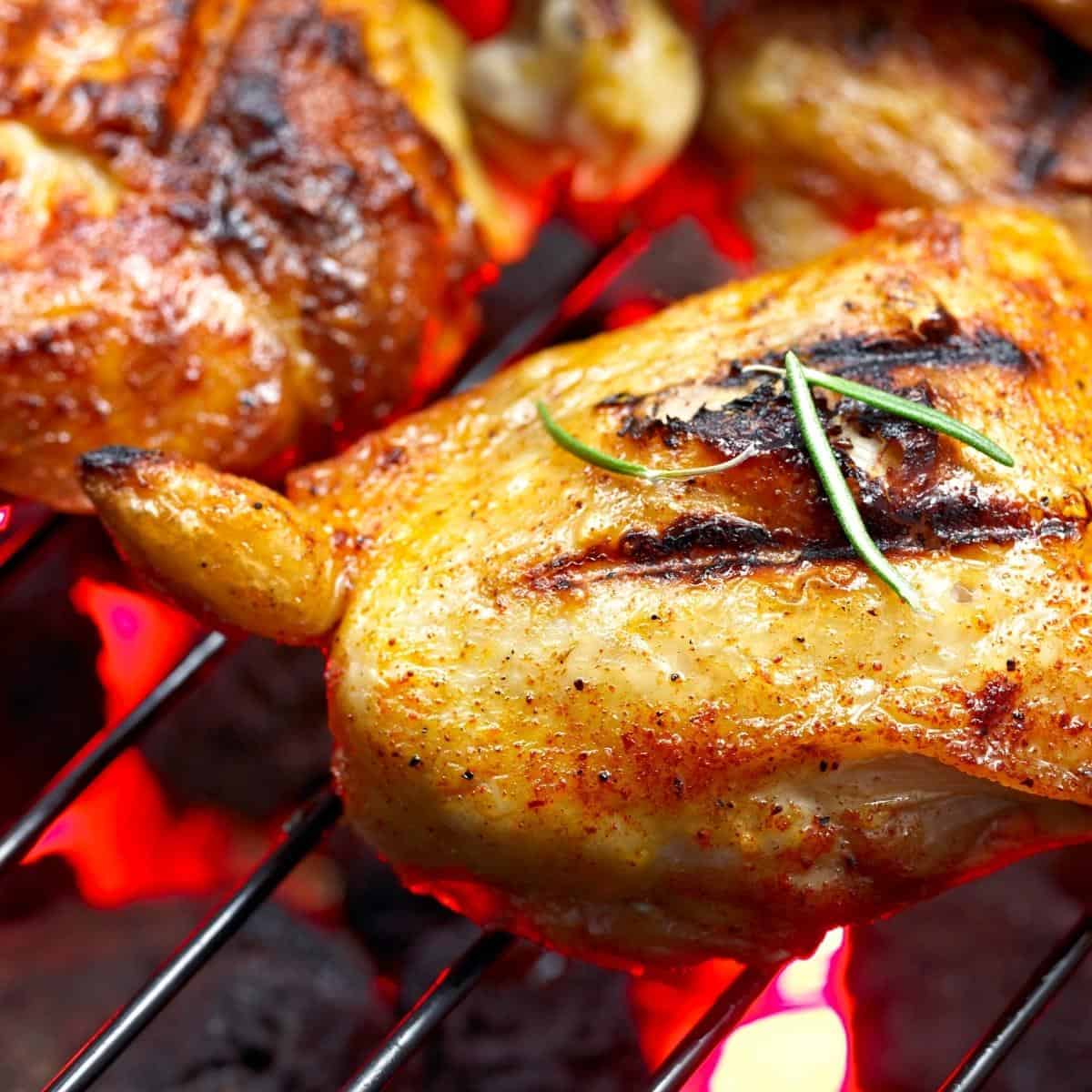The Ultimate Guide to Barbequing Meats
There’s nothing like the taste of barbequed meat. The smoky flavour is perfect for summertime cookouts with family and friends. But barbequing meats can be tricky. If you don’t know what you’re doing, you can easily end up with a tough, dry piece of meat.
This guide will teach you everything you need to know about barbequing meats, from choosing the right cuts of meat to understanding grill temperatures. By the end, you’ll be a grilled meat master!
Choosing the Right Cuts of Meat for a BBQ
One of the most important aspects of grilling meats is choosing the right cuts. Not all meats are created equal when it comes to grilling. You’ll want to avoid tough cuts of meat, as they will likely end up dry and chewy. Instead, opt for tender cuts like fillet, ribeye, or quick cook strips. These cuts are well-marbled, which means they’ll be juicy and flavourful when barbequed.
Another thing to keep in mind is the thickness of the meat. If you’re using a thin cut of meat, like flank steak, it’s important not to overcook it. Thin cuts of meat cook quickly and can easily become dry if they’re left on the barbeque for too long.

Seasoning Your Meat
Once you’ve chosen your cuts of meat, it’s time to season them. This is where you can really get creative with your flavours. There are endless possibilities when it comes to seasoning meats for the barbeque. You can use a simple rub of salt, pepper, and garlic powder, or go for something more complex like a chilli-lime rub. It’s really up to you.
If you’re using a marinade, it’s best to apply it to the meat several hours before barbequing. This will give the flavours time to permeate the meat and make it even more delicious.

How to Marinade
There are two ways to marinate meat: wet and dry. Wet marinades typically consist of an acid, like lemon juice or vinegar, and a carrier oil, like olive oil or coconut oil. These ingredients help to tenderise the meat and infuse it with flavour.
Dry marinades, on the other hand, use herbs, spices, and other seasonings to flavour the meat. They don’t contain any liquids, so they’re perfect for delicate cuts of meat that might otherwise become too mushy.
Whichever method you choose, be sure to apply the marinade evenly to all sides of the meat. You can either place the meat in a resealable bag or a shallow dish. If using a bag, make sure to squeeze out any excess air so the marinade can really coat the meat.
Let the meat marinate for at least 2 hours or up to 12 hours for thicker cuts.

Marinade Ideas
-Teriyaki
–Balsamic vinegar and olive oil
-Chipotle pepper and adobo sauce
–Soy sauce, honey, and ginger
-Lime juice, coriander/cilantro, and jalapeno pepper
–Garlic, rosemary, and olive oil
-Orange juice, lemon juice, and thyme

Getting the Barbeque Ready
Now that your meat is seasoned and ready to go, it’s time to get the barbeque fired up. If you’re using a charcoal barbeque, you’ll want to wait until the coals are white-hot before adding any meat. This usually takes about 30 minutes. For a gas barbeque, preheat to medium-high heat.

Gas vs Charcoal barbeques
There’s a debate among barbeque lovers about which is better: gas or charcoal. It really comes down to personal preference. Gas barbeques are more convenient because they heat up quickly and evenly. Charcoal barbeques take a bit more work, but many people say they produce tastier food.
If you’re just starting out, a gas barbeque might be the way to go. But if you’re looking for that authentic barbequed flavour, you might want to try cooking with charcoal.

Cooking the Meat
Once the barbeque is heated, it’s time to start cooking! If you’re using a thin cut of meat, like flank steak, you’ll want to cook it for about two minutes per side. For thicker cuts, like ribeye, cook for three to four minutes per side.
Remember, the key to juicy, flavorful grilled meat is not to overcook it. Use a meat thermometer to check for doneness. For rare meat, aim for 50°C/120°F. For medium meat, cook to 70°C/160°F. And for well-done meat, cook to 80°C/180°F.

Tips for Barbequing Steak
Steak is best cooked rare or medium-rare.
Thin cuts of steak will cook quickly, so be careful not to overcook them.
Apply a dry rub or marinade to the steak several hours before barbequing.
Use a meat thermometer to check if it is cooked to your liking.
Let the steak rest for five minutes before cutting into it. This allows the juices to redistribute throughout the meat.
Wait until the meat is fully cooked before flipping it. Flip only once or twice during cooking to prevent sticking

Tips for Grilling Chicken
Start with chicken that has been properly thawed.
Marinade the chicken for at least two hours before grilling.
Chicken is cooked when it reaches an internal temperature of 70°C/165°F.
Be sure to clean the grill grates before cooking to prevent sticking.
Use a meat thermometer to check for doneness.
Let the chicken rest for five minutes before cutting into it. This allows the juices to redistribute throughout the meat.

Tips for Barbequing Pork
Pork is best cooked to an internal temperature of 65°C/145°F
Marinade the pork for at least two hours before barbequing.
Pork can be a little tricky to barbeque, so be sure to use a meat thermometer to check for doneness.
Let the pork rest for five minutes before cutting into it. This allows the juices to redistribute throughout the meat.

Tips for Barbequing Fish
Fish is best cooked to an internal temperature of 65°C/145°F.
Be sure to clean the barbeque grates before cooking to prevent sticking.
Use a fish basket or foil packet to prevent the fish from falling through the grate.
Barbeque for two to three minutes per side, depending on the thickness of the fish.

Resting the Meat
Once the meat is cooked to perfection, it’s important to let it rest before cutting into it. This allows the juices to redistribute throughout the meat, making it even more tender and delicious. Let the meat rest for five to ten minutes before slicing into it.

Cleaning a Barbeque
Once you’re done cooking, it’s important to clean your barbeque. This will prevent rusting and ensure that your grill is ready to use the next time you want to fire it up.
To clean a gas barbeque, turn off the heat and let it cool down. Then, remove the grates and scrape off any food that’s sticking to them. Next, use soapy water to scrub down the inside of the barbeque. Finally, wipe down the exterior with a damp cloth.
To clean a charcoal barbeque, wait until the coals have cooled completely. Then, dump out the ashes and brush off the grates. Next, use soapy water to scrub down the inside of the barbeque. Finally, wipe down the exterior with a damp cloth.
Additional BBQ Tips
If you’re using a charcoal barbeque, be sure to use enough coals to create a hot, even cook.
To add additional flavour to your barbequed meats, try using wood chips. Soak the chips in water for 30 minutes, then add them to the hot coals.
When barbequing chicken or fish, it’s best to use an oiled barbeque basket. This will prevent the meat from sticking to the grates and falling through.
If you want to get creative with your barbequed meats, try using different herbs and spices. Experiment with different flavour combinations to find what you like best.
Don’t be afraid to experiment! Barbequing is a great way to try new things and have fun in the kitchen. So go ahead and give it a try!
Common Mistakes
Not properly thawing the meat before barbequing. This can result in uneven cooking or even food poisoning.
Not using a meat thermometer. This is the best way to ensure that your meat is cooked to perfection.
Not letting the meat rest. This step is crucial to making sure that the juices are evenly distributed throughout the meat.
Forgetting to clean the barbeque. This can lead to rusting and sticking, making it harder to use next time.
Now that you know all there is to know about barbequing meats, it’s time to fire up the barbeque and get cooking! Experiment with different cuts of meat and seasoning combinations to find your perfect taste. And don’t forget to share this guide with your fellow barbeque masters.
Now that you know all there is to know about barbequing meats, it’s time to fire up the barbeque and get cooking! Put your newfound skills to the test and impress your family and friends with perfectly grilled steaks, chicken, or fish. Have fun and stay safe!




